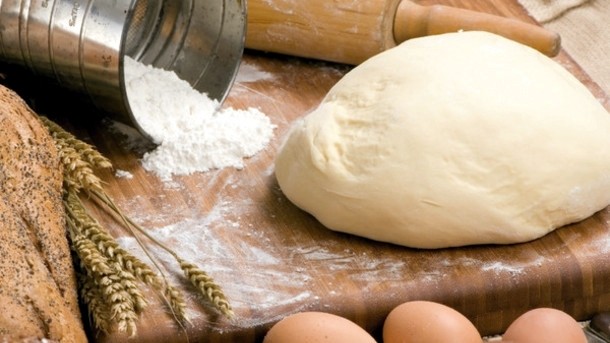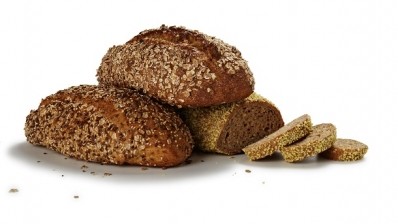This week Down Under
Kiwi bread study gives rise to healthier staple food

A study by the University of Otago, Wellington looked at the formulation of bread from the perspective of reducing risk of heart disease while keeping ingredient costs down.
Lead author Nick Wilson said that bread’s status as a New Zealand dietary staple meant it was a priority for researchers to investigate ways to improve it to reduce diet-related disease risks.
“Bread can be a way to increase dietary intake of fibre and healthy seeds such as flaxseed/linseed. The problem of most breads being high in salt can also be addressed by reducing the amount of sodium-based salts and increasing the amount of healthier potassium-based salts. Potassium is particularly good for heart health,” Professor Wilson said.
In their study, which was published in BMC Nutrition, Professor Wilson’s team used computer-based linear programming which allowed them to get the best mix of healthy ingredients into the bread designs for the lowest prices. They made comparisons with commercial white breads available in 15 wealthy countries, including New Zealand, as well as with high-seed breads in six of these countries.
The research found that an optimised loaf costing NZ$1.50 (US$1.02) in ingredients was superior to comparable commercial white loaves by virtue of having lower sodium and high potassium.
More expensive bread that cost NZ$3 to make was also nutritionally superior to commercial loaves with seeds in terms of lower sodium, higher potassium, higher dietary fibre, and the best polyunsaturated fatty-acid to saturated-fatty-acid ratio. It was this version of the bread that included a moderate amount of added linseed and also some walnut.
“Dietary risk factors are particularly important for non-communicable diseases such as cardiovascular disease, diabetes and cancer. New Zealand could do more to prevent these by making improvements to the food environment—and one of them is providing the option of low-cost healthier breads,” said Professor Wilson.
The authors suggest that such bread designs could be promoted by health agencies and provided in workplace cafeterias and public hospitals. They could even be part of a government-funded “heart healthy bread” voucher system to prevent further heart attacks and strokes in people with cardiovascular disease.
Yet Professor Wilson noted that “while we liked the taste of these optimised breads which we made in home bread-making machines, further taste testing with the public would be required to ensure adequate levels of public acceptability”.
“But we do know that some bread on the New Zealand market already has some of the desirable features such as extra seeds—even if they still have problems such as high sodium levels.”
Source: BMC Nutrition
April 18, doi: 10.1186/s40795-016-0062-x
“Designing low-cost ‘heart healthy bread’: optimisation using linear programming and 15-country comparison.”
Authors: Nick Wilson, Nhung Nghiem, Sian Ryan, Christine Cleghorn, Nisha Nair and Tony Blakely
More stories from Down Under…
Barossa Valley brothers develop bottle top to free sulphites from wine
An innovative bottle closure with the potential to significantly reduce wine allergies is being developed in Australia’s most famous wine region.
Brothers Joshua and Simon Schmidt started their Barossa Valley company Vinnovate in 2012 and have since developed a bottle closure that releases a solution to reduce the impact of preservatives or add subtle flavours to wine.
When activated, by pressing a button on top of a screw cap, the solution is mixed with the wine and binds to free sulphites, removing their preservative properties and reducing their ability to cause a reaction.
The Vinnovate invention has beaten more than 100 Australian and New Zealand industry innovations to take out the Brancott Estate Winexplorer challenge, which carries a A$35,000 (US$26,350) cash prize plus the opportunity to work with Pernod Ricard to bring the product to market.
Joshua Schmidt, the company’s chief innovation officer, said the award was a huge thrill.
“We believe that the Winexplorer challenge has validated our idea and it now gives us a springboard from which to go forward,” he said, adding that it would be up to the consumer as to whether they activated the solution or not.
“We’ve found from a lot of market research that more and more people are experiencing a reaction when they drink wine and it’s actually pushing people away from the industry.
“We wanted to create something that was very similar to an existing screw cap but has an element of functionality because across the wider consumer goods space there is a strong trend towards individualisation.”
Sulphites are preservatives widely used in winemaking because of their antioxidant and antibacterial properties. However, common reactions to these include headaches and red, itchy skin.
“Being Barossa boys and children of the industry, we set out to find a means so that everyone can enjoy wine,” Joshua said.
“We believe it freshens the wine up as well and allows it to be more of a consumer-centric experience, rather than traditionally having to wait for 30 to 60 minutes after opening for the wine to ‘breathe’.
“We want to do something good for the industry.”
Vinnovate managing director Simon Schmidt is a winemaker while his brother’s background is in marketing, with a particular focus on the pharmaceutical industry.
The Schmidt brothers have developed prototypes and have commenced discussions with a number of wineries around trials.
Joshua said he hoped for a commercial release towards the end of the year.
“It’s our vision to see this as the next generation screw cap closure for wine,” he said.
“We currently are talking to some wineries about this and it’s our goal that this would be inclusive wine packaging.
“We believe this has tremendous widespread appeal and application just like how the Clare Valley was an early adopter of the screw cap 40-odd years ago.”
Australians still exceed sugar guidance, though trends are improving
More than half of Australians regularly exceed official recommendations on the consumption of sugar, according to new data from the Australian Bureau of Statistics.
While the World Health Organisation advises that free sugars should contribute no more than 10% of total energy intake, the ABS found that 52% of Australians are habitually in excess of this figure, with the nation consuming an average amount of 60 grams per day—equivalent to 14 level teaspoons of white sugar.
However, the research shows that on the whole, Australians are close to meeting the WHO recommended level, deriving an average of 10.9% of their total dietary energy from free sugars.
The ABS defines free sugars as added sugars from food and beverage processing and preparation, as well as honey and the sugar naturally present in fruit juice.
"The groups most likely to exceed the WHO recommendation were children and young people aged 9-13 and 14-18 years, with close to three-quarters of them usually deriving 10% or more of their energy from free sugars," said Louise Gates, ABS director of health.
"The highest consumption of free sugars was among males aged 14-18 years who averaged 22 teaspoons per day, while the top 10% of male teenagers have at least 38 teaspoons of free sugars per day."
Beverages were the source of just over half of the free sugars, with soft drinks, sports and energy drinks accounting for 19%, followed by fruit and vegetable juices with 13%.
The leading food sources of free sugars were muffins, cakes or scones and confectionery—each contributing 8.7—followed by free sugars in honey, jams and similar spreads, ice confection and plain sugar.
Gary Dawson, chief executive of the Australian Food and Grocery Council said that the data reinforced the need for the food and beverage industry to continue driving home the message of moderation and variety in diets.
He said that greater consumer choice and product information was needed, along with a stronger emphasis on innovation and reformulation.
“While we are in sight of this target, we need to enhance consumer education and information to empower people with the information to make healthy food choices,” Dawson said.
“Progress is being made as Australian food and beverage companies are investing in innovation, reformulation, portion control and enhanced consumer labelling to ensure that consumers have a broader understanding of how sugar, salt and fat contribute to an overall diet.”
The ABS has previously confirmed an overall decline in Australian sugar consumption to 31 teaspoons of sugar from 44 for males aged 19-30, and 24 from 29 teaspoons for females in the same age group between 1995 and 2011.
Regulator mulls ‘all other foods’ maximum residue limit for chemicals
The antipodean food regulator has called for submissions on a proposal to create an “all other foods” maximum residue limit for some agricultural chemicals.
Steve McCutcheon, chief executive of Fsanz, said the current system of limits set for chemicals and specific commodities is problematic.
“This has created issues for enforcement agencies and producers because low levels of chemicals permitted in one food may be accidentally found in other foods not listed in the [food standards] code,” said McCutcheon.
“While these levels, which can result from things like spray drift, don’t represent a public health and safety concern, the presence of chemicals means the food cannot legally be sold.”
Fsanz is now consulting on an approach to set limits for some chemicals on all other foods except animal commodities. Some chemicals would be excluded because of high toxicity, he added.
The “all other foods” limit would be established on a case-by-case basis and dietary exposure assessments will be undertaken for the whole population to ensure public health and safety.
After having assessed submissions, Fsanz will notify its decision on standards to ministers responsible for food regulation who can then decide to adopt, amend or reject these, or ask for a further review.
The closing date for submissions from all stakeholders is June 3.










